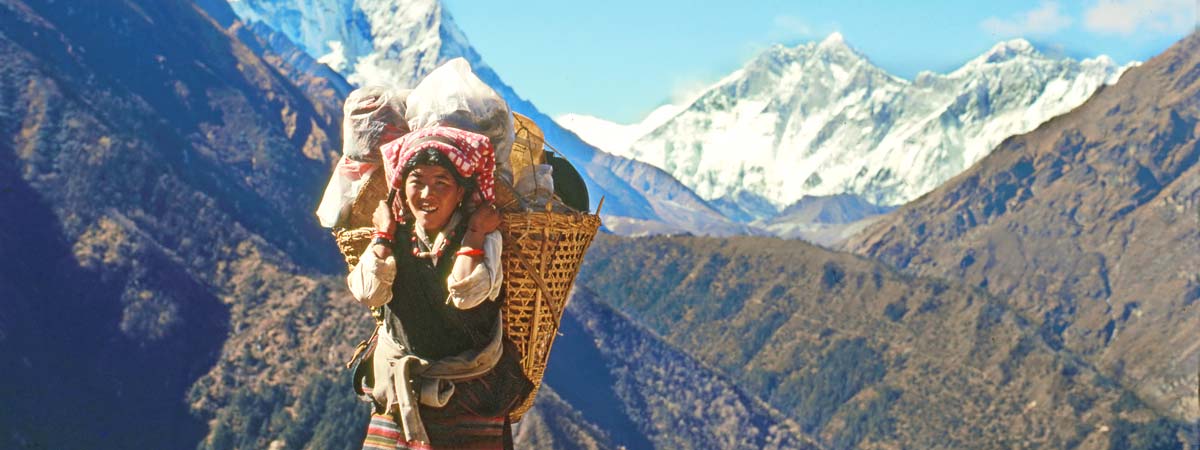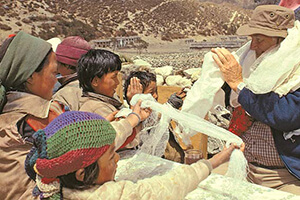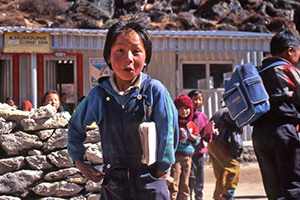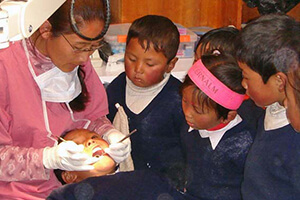Sherpas and Everest
After the first ascent of Mount Everest by Edmund Hillary and Tenzing Norgay, the spirit of their achievement was heralded around the world, attracting thousands of trekkers and climbers to the Khumbu region. The feat shone a spotlight on Sherpas, who were honored for their kindness and strength on the mountain. Yet, in the shadow of the world’s tallest peak, life for them was as it had been for centuries. They lacked basics like clean water and electricity, and there were no schools or clinics.
One of AHF’s very first partners was Sir Edmund Hillary and his Himalayan Trust. For 30 years, we worked together to improve lives in every corner of the Khumbu, giving thousands of children an education, supporting clinics and hospitals, restoring Buddhist monasteries that are the heart of Sherpa culture, and building infrastructure that makes life at high altitude less demanding. The late Sir Ed is no longer with us, but our work with Sherpas continues today, giving them a future while preserving and honoring their culture and identity.
covers a Sherpa's doctor visit at Khunde Hospital
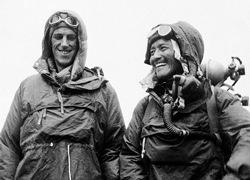
A few hundred years ago, a group of Tibetans crossed over the Himalayas to settle in what is now Nepal. Called Sherpas, which means easterner in Tibetan, they lived in isolation on the rugged south shoulders of Everest. A legend told that the first man to climb the world's highest mountain would be one of their own. On May 29, 1953 Tenzing Norgay stood with Sir Edmund Hillary at the top of the world. The legend had come alive.
